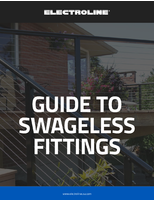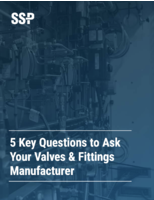Vitrified Grinding Wheels incorporate abrasive bond.
Share:
Press Release Summary:

While extremely porous, Vitrium3 Bond adheres strongly to grains, allowing grinding wheels to be used safely at speeds up to 80 m/sec. Wheel form retention and radius accuracy are optimized, minimizing dressing time and wear on diamond dresser and wheel. Free flow of coolant through porous matrix results in efficient chip clearance, avoiding wheel loading and clogging. Grinding burn is practically eliminated, and so too are residual stresses and metallurgical change in surface of component.
Original Press Release:
Less is More in New Abrasive Bond
Grinding wheels remove metal 20% faster and last 30% longer
Cutting tool and machine tool technologies tend to leapfrog each other, with one gaining a technological lead before the other catches up and moves ahead. In the field of grinding, the consumable has taken precedence with the launch in May 2013 of Saint-Gobain Abrasives' new bond, Norton Vitrium3.
It is incorporated into the company's latest, high performance, vitrified grinding wheels, which are able to exploit the full capabilities of grinding machines on the market, from top-end models to those of lower power and rigidity. The task of the bond matrix is to hold in place the abrasive grains, which can be of various types from the proprietary Norton Quantum ceramic to conventional aluminium oxide.
The last thing one wants in a grinding wheel is the bond material, despite it being essential to the wheel’s stability. The other two constituents – abrasive and pores – are useful for removing metal from a workpiece and allowing coolant through. The bond, however, only gets in the way of a grinding wheel's functionality. The secret is to ensure that what are essentially particles of vitrified clay, or glass, impact the grinding process as little as possible.
Saint-Gobain Abrasives' R&D division spent three years developing and optimising the Vitrium3 bond, applying for patents and bringing it to market. As a world-leading glass manufacturer, the company's parent group has considerable technological experience in vitrification technology, which was key to discovering the novel chemistry behind the formulation of the bond.
While extremely porous, Vitrium3 is the company’s toughest bond to date, adhering strongly to the grains. It allows the grinding wheels to be light and hence used safely at speeds up to 80 m/sec, even though there is only a small amount of bond material retaining the abrasive. Higher feed rates, spindle speeds and infeed may be employed, significantly increasing productivity.
In addition to raising machining efficiency, the strong bond increases the life of Vitrium3 wheels by up to 30 per cent compared with conventional bonds.
Despite the low bond-to-abrasive ratio, grain adhesion and holding power are superior to those of any other bond. Wheel form retention and radius accuracy are significantly improved, reducing dressing time and so minimising wear on the diamond dresser and wheel, increasing the service life of both.
The grinding wheel structure increases exposure of the abrasive grains and improves coolant flow. The wheel is therefore able to discharge swarf more efficiently and grind at a higher metal removal rate. Q' is typically 20 per cent higher than when using wheels made with a conventional bond.
Greater exposure of the grain to the component being machined reduces grinding forces by up to 25 per cent. The power drawn from a machine is lowered by typically 15 per cent, saving energy, and workpiece deflection is reduced, leading to better machining accuracy. These characteristics also permit less rigid and lower power grinding machines to deliver better results.
Grinding pressures and energy consumption are further reduced by decreased interaction between the bond and the component, a consequence of thinner bond posts holding the abrasive grains. An additional advantage is that free flow of coolant through the porous matrix results in efficient chip clearance, avoiding wheel loading and clogging. Grinding burn is practically eliminated, and so too are residual stresses and metallurgical change in the surface of the component.
This is especially important in aerospace applications, such as when jet engine vanes and turbine blades are being ground from nickel-based superalloys. It is also critical for machining other heat sensitive materials such as tool steels and chromium molybdenum. Creep-feed as well as traditional grinding practices are supported.
The versatile wheels are ideal for use across a wide range of industries. Applications include cylindrical grinding of automotive crankshafts and camshafts; gear grinding; surface grinding of linear bearings and mould tools; internal grinding of hydraulic components, bearing tracks and gear bores; and centreless grinding of bearing race ODs (outside diameters), bar and tube.
It is worthwhile bearing in mind that the advantages of Vitrium3 hold true irrespective of the grain and wheel type, be it straight, cylindrical, cup or segmented. Each abrasive has distinct hardness, strength, fracture toughness and impact resistance properties, suitable for different applications. In some of Saint-Gobain Abrasives' more highly engineered grinding wheels, two or more grain types are often combined to achieve specific operational characteristics.
Interestingly, even the air in the Vitrium3 bond is highly engineered, benefitting the environment. When manufacturing the open structure, no pore-inducing chemicals are added to achieve the high level of permeability, unlike with other porous vitrified wheel technologies. Moreover, Vitrium3 is manufactured using a low firing temperature, reducing energy consumption and the bond's carbon footprint. The manufacturing method also eliminates costly process revalidation that is necessary when certain chemicals are included in a grinding wheel mix.
David Balshaw, Business Development Manager - Engineered Markets at Saint-Gobain Abrasives, advised: "Whether the goal is to reduce total cost per part, increase throughput, or improve workpiece quality, Norton Vitrium3 is reshaping the world of precision grinding to meet these needs.
"We offer an exclusive Process Solutions Programme (PSP), free to customers, during which a trained engineer visits the user's site to analyse their grinding operations and make enhancements to increase productivity, improve quality, reduce costs and improve safety.
"With the introduction of the Vitrium3 bond, it is highly likely that our new grinding wheels will feature prominently in future optimisation programmes to reduce customers' unit manufacturing costs."
Further information on Norton Vitrium3 grinding wheels and PSP audits is available from David Balshaw, Saint-Gobain Abrasives. Tel: 01785 279553 or email: david.balshaw@saint-gobain.com or visit www.saint-gobain-abrasives.com
On behalf of:Â Â Â Saint-Gobain Abrasives, Doxey Road,
Stafford, ST16 1EA
Contacts: Sonia Uppal – Tel: 01785 279569
Charlie McShane – Tel: 01785 279561
E-mail: sonia.uppal@saint-gobain.com
Charlotte.McShane@saint-gobain.com
Web site: www.saint-gobain-abrasives.com




